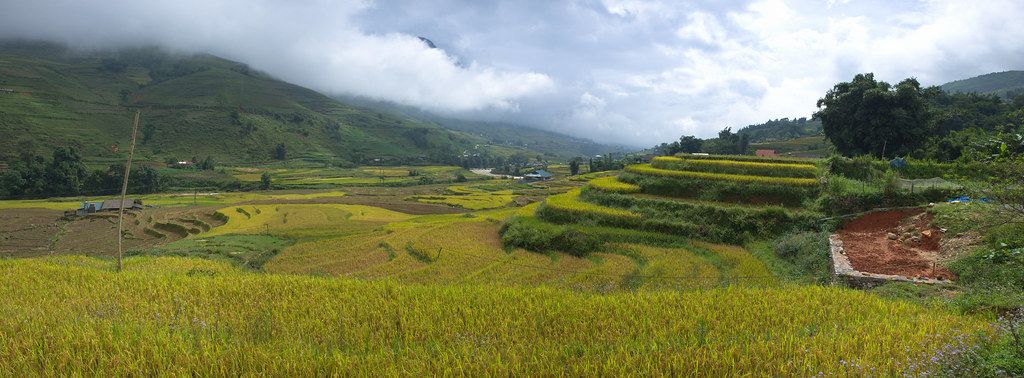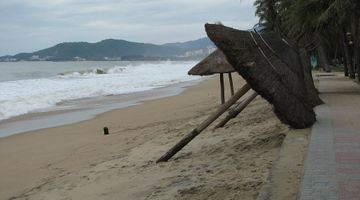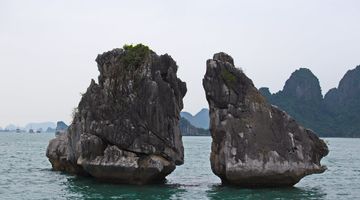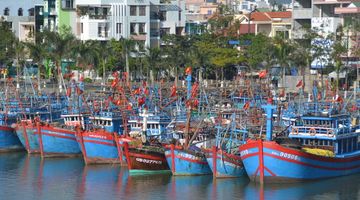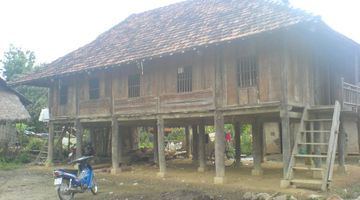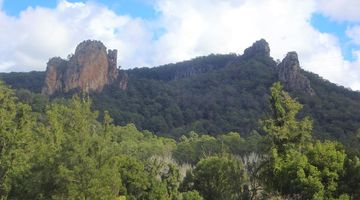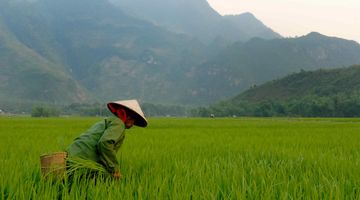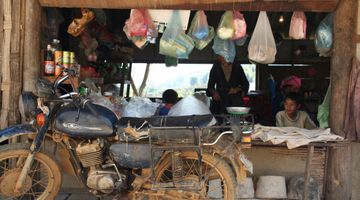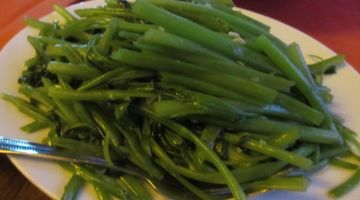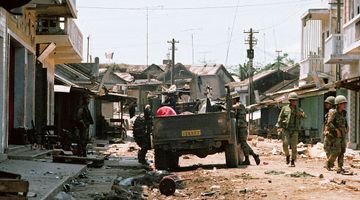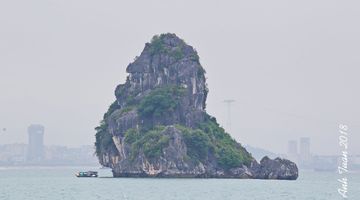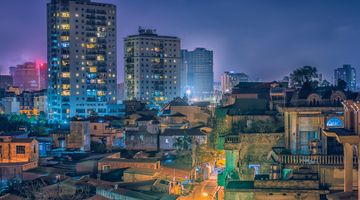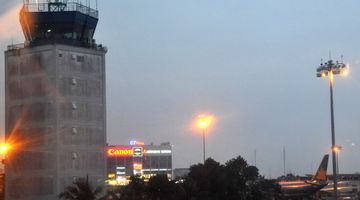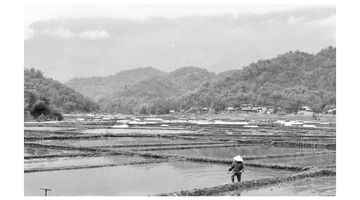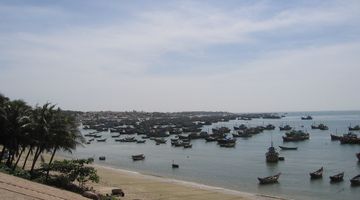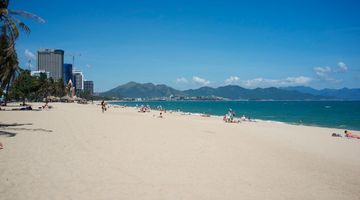Sapa
Why go?
At first glance at a map of Vietnam you might think Sapa is out of the way, too far from other towns of significance to warrant a detour. You'd be very wrong. Sapa is the best place in the country to experience first-hand exactly how many rural communities continue to live their daily lives. From visiting local markets to attending sewing lessons there are things to see and activities to participate in Sapa.
If you come this far north, you'll almost certainly do so to visit the nearby villages of the minority Hmong, Dao, Tay and Giay peoples.
You'll also love your visit to Sapa as it will take you back to nature – some of the country's best treks can be found in these hills. All year round these treks offer some of Vietnam's most stunning views, where you can gaze out at miles of uninterrupted scenery.
When to go
The weather in Sapa is notoriously unpredictable, but be assured that if you visit in winter, it will be cold, with temperatures sometimes dropping below freezing, so pack with this in mind.
On some days you'll get warm sunshine and impenetrable fog in the same afternoon, so be prepared. Winter is best avoided, as you'll miss out on the breathtaking scenery as the rice fields will be empty and the fog is likely to limit visibility.
However, the weather here can be a welcome break from the stifling heat of Hanoi, as it is generally cooler than further south year-round.
August is an excellent time to visit, although it's very wet, you'll see the best views of the luscious green countryside expanding out into the distance.
Accommodation
Most visitors come here to stay overnight in a homestay, it’s the most popular accommodation in these parts and no trip to Vietnam is complete without it. These homestays give a unique insight into local life with the best ones plunging you headfirst into communities that have barely changed their lifestyle for hundreds of years. Most also offer guided treks and many allow you to try to make some of the local cuisine.
Hotels and guesthouses are generally fairly busy year-round and if you're staying over the weekend, it's best to book before you arrive as there can be limited space. As a result, you may find the accommodation in Sapa itself less value for money when compared to Hanoi, especially if you just turn up at the weekend. But there's still great value to be had booking ahead!
Food
All the usual Vietnamese staples are here, along with plenty of other options for westerners, but there also a huge range of local cuisine to sample from the neighbouring minority villages, including thang co, a Hmong horsemeat stew, rice cakes and tao meo wine, a local whiskey produced in Hmong villages.
A trip to Sapa will show you there's more to Vietnamese food than just pho and banh mi.
Getting around
Sapa is a small town so everywhere can be reached on foot. However, a word of warning, if you want to wander up Mount Fansipan or many of the neighbouring areas, it's illegal to do this without a guide. Don't worry, once you're in Sapa most shops and every guesthouse can arrange this for you.
Unlike many other the local areas surrounding Sapa, it is possible to visit the nearby village of Cat Cat, although you will have to pay a VND30,000 entrance fee. The village is a lovely 3km walk from Sapa and, although it gets a bit steep, well worth the effort as you'll be rewarded with stunning views over the rice paddies (if it's the right time of year!).
Getting in and out
As Sapa doesn't have its own train station so visitors wanting to enter or leave Sapa by train will first need to travel to Lao Cai (one hour from Sapa at around VND30,000), which is 8 hours from Hanoi with tickets starting from VND150,000. One of the most popular ways to travel to Sapa is by overnight train from Hanoi. In addition to the regular Vietnam Railways services there are many cars run by private train companies which offer a higher level of service.
If you're planning on doing this train journey overnight, it's best to book a sleeper well ahead of your trip as there is limited space and they do sell out. Trust us, you don't want to spend the night trying to sleep on a hard seat instead. You can book a sleeper online here at 12Go.Asia up to one year in advance.
Another option is using minibuses from private companies to make the trip back to Hanoi but these are usually expensive, and only really worthwhile if travelling in a big group or as part of a tour. On all these journeys, the road approaching Sapa is very windy and mountainous and if you've ever suffered from travel sickness before, this trip will definitely bring it back so bring tablets!
Finally, it's also possible to do the Sapa to Hanoi journey by motorbike, either solo or on a guided tour however it is quite a difficult trip taking around 10 hours, usually longer if you're not on a tour.
Safety
Unfortunately, the biggest safety risk is yourself. If you hire a motorbike, you must take extreme care on the roads surrounding Sapa as these roads aren't always in the best condition. Also, as the weather can change quickly it's recommended to be cautious.
There's a fairly low risk of crime here and you're far more likely to get ripped off buying handicrafts in markets or tourist shops.

